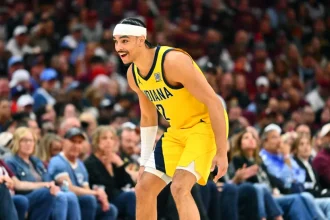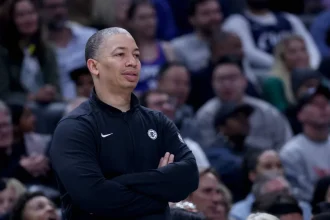In the world of professional darts, few moments electrify a crowd more than a ton-plus checkout—a finish of 100 points or more. From the iconic 170-finish to clutch 132-outs under pressure, these moments make for thrilling highlights and commentator soundbites.
But a deeper dive into the data reveals that not all ton-plus finishes carry the same weight, and in many cases, the way these statistics are presented skews the true picture of a player’s skill.
The Overrated 100-Finish
Statistically, the 100 checkout is among the most common and least difficult of the ton-plus finishes. Most top players clear it using just two darts—typically T20, D20—and succeed nearly 50% of the time.
Despite its simplicity, the 100-finish is grouped with much harder outs like 167 or 161, skewing statistics in favor of players who frequently land easier checkouts. This inflates “ton-plus finish” stats, often misleading fans about the actual difficulty and quality of a player’s performance.
In contrast, finishes like 167, 161, or 170 require three perfect darts with no room for error—making them far more impressive and rare feats.
Context Matters: Accuracy Over Volume
To get a fairer picture of a player’s finishing ability, analysts argue that contextual data—such as the number of attempts—is essential.
For example, a player hitting a 161-finish once in 10 attempts (10%) is performing very differently from one who does so once in 50 attempts (2%).
This level of nuance is often missing from standard broadcast statistics, which simply tally successful checkouts regardless of context.
Classifying Ton-Plus Finishes by Difficulty
To provide a clearer picture, ton-plus checkouts can be classified into four categories, based on difficulty and required precision:
-
Treble-Treble-Bull (TTB):
E.g. 161, 164, 167, 170 — require two trebles and a bullseye.
High difficulty; minimal margin for error. -
Treble-Treble-Double (TTD):
E.g. 131, 134, 136–160 — require two trebles and a double.
Challenging but slightly more forgiving than TTB. -
Treble-Single-Bull (TSB):
E.g. 121–130 — involve one treble, a single, and the bull.
Offers some flexibility in the route. -
Treble-Single-Double (TSD):
E.g. 99–120 (excluding 100) — more common finishes with varied routes.
Typically less difficult; players often have multiple path options.
Littler Leads—But Not Everywhere
Luke Littler, the 18-year-old prodigy, dominates in the TTB category, boasting a remarkable 7.1% success rate on 161–170 finishes in 2025—nearly triple the PDC average of 2.6%. He’s already hit eight 170-finishes this year alone.
However, his performance dips in other areas:
-
On TTD finishes (131–160), he ranks sixth, behind Josh Rock, Jonny Clayton, and Cameron Menzies, all of whom exceed 10% accuracy.
-
On TSB finishes (121–130), Littler’s success rate falls to 10.6%, placing him in the bottom third of the PDC rankings.
By contrast, Rob Cross leads the TSB category with over 20% accuracy, and Jonny Clayton is especially deadly on the 121-finish, converting it over 30% of the time.
Littler redeems himself in the TSD range (99–120), where he leads again with nearly 30% accuracy, closely followed by Ross Smith (29.1%). Notably, Smith has yet to land a single TTB finish in 150 attempts this year, underscoring how performance varies by finish type.
Inconsistency Between Finish Types
The data shows little correlation between success across different categories. For instance:
-
Cameron Menzies excels at TTD finishes but ranks near the bottom on TSD (just 16% success).
-
Scott Williams is better at 121–130 than the supposedly easier 101–120.
-
Jelle Klaasen has landed two finishes over 160 in 70 attempts but is 0-for-140 on finishes between 136 and 160.
These examples highlight the importance of breaking down finishing ability into granular statistics, rather than relying on broad “ton-plus” tallies.
Conclusion: Finishing Needs a More Nuanced Lens
While ton-plus checkouts will always be celebrated, the way they’re currently presented—without context or differentiation—does a disservice to the complexity of modern darts.
A routine 100 is not equal to a clinical 161, and a player’s strength in one finish range often says nothing about their ability in another.
The data shows us a more textured landscape:
-
Luke Littler remains unmatched on big, show-stopping finishes.
-
Rob Cross quietly dominates the mid-range TSB finishes.
-
Ross Smith and others shine in less glamorous, but more frequent, checkout zones.
Ultimately, the real artistry in darts lies not just in hitting trebles and doubles, but in doing so under pressure, across a variety of routes, and with unwavering consistency.














